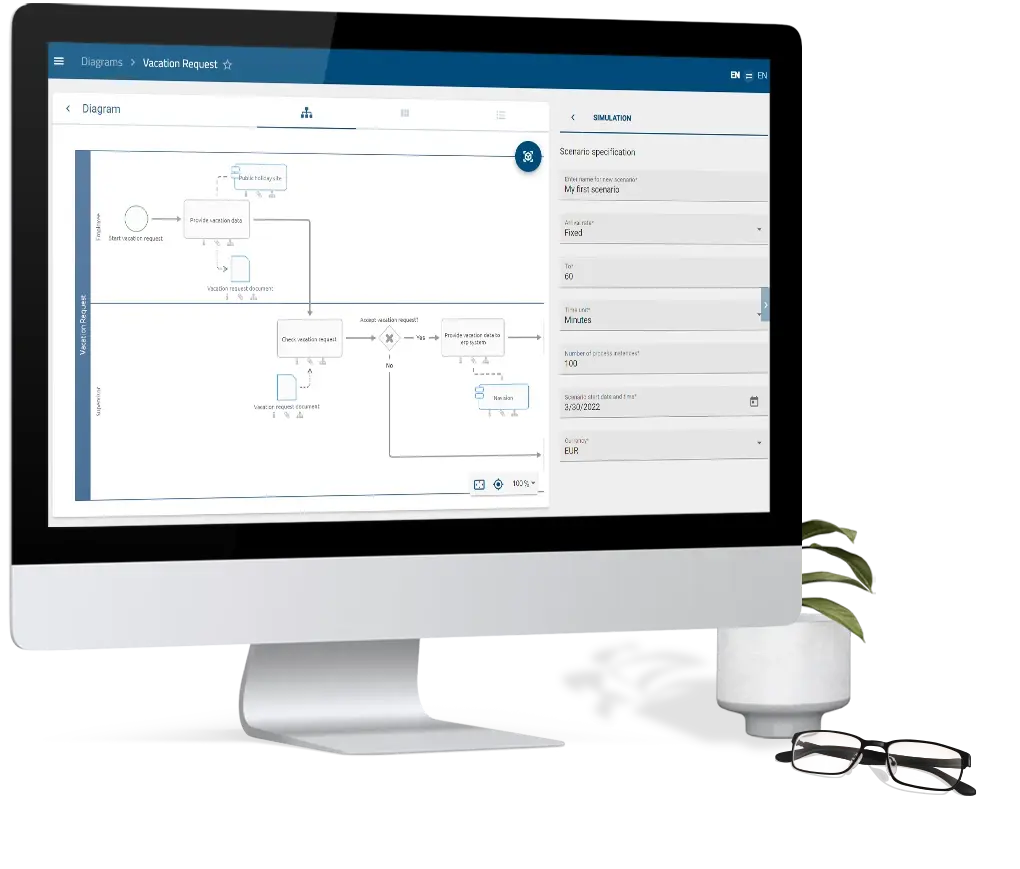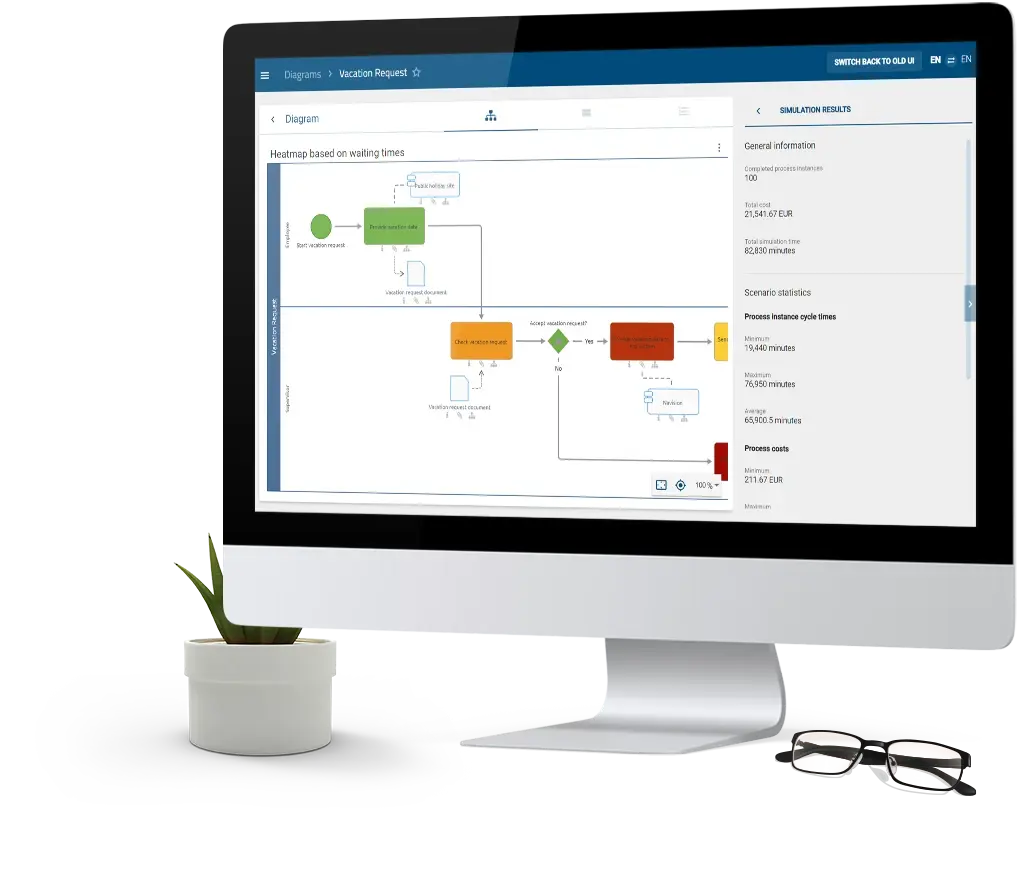BIC Process Design
Understand & Transform
Supercharge your business operations with the most intuitive AI-powered BPM software.
It seems that you come from a German speaking country. Here you can change the language
EnglishFind out where the maximum potential of your processes lies - with the help of effective process simulation! With the simulation function in BIC Process Design, you can create extensive scenarios that provide you with valuable results on the costs, cycle times and delays of your processes, to name just a few. Based on these analyses, you can adjust your processes in a targeted manner and thus give your process optimization a new boost.

In addition to process modeling as the main function, BIC Process Design offers you the possibility to simulate your documented processes. This functionality can be used for all processes modeled in a BPMN diagram. The simulation is useful for calculating KPIs such as process costs and cycle times as well as bottlenecks and for drawing valuable conclusions for your process optimizations. The results of the process simulation help you to estimate the effects of process changes in advance. Our tool also helps you determine an optimized process setup so that you can then take targeted measures to reduce costs and improve the efficient use of resources. For example, if you discover that your process is stuck at a certain point, you can use the simulation function to find out what changes you need to make to solve the bottleneck. This allows you to target your staff without losing valuable work time in a testing phase first. Create a scenario with real data or hypothetical parameters that define how your process could run. The simulation then executes the scenario and delivers results to analyze bottlenecks, lead times and costs of your processes. To analyze the maximum potential of your process and make it more cost- and resource-efficient, you can then create different scenarios with additional hypothetical parameters to map a variety of use cases.


Process simulation may sound complex. But in BIC Process Design it is as simple as ABC. You only need to create a scenario and determine the number of process instances as well as the start of the simulation. Once you have specified hypothetical values for all process steps and participants, such as activities, decision paths and process participants, you can start the simulation. The following specifications lead to particularly meaningful results in the process simulation:
For an accurate simulation, the details of your processes are very important. Only with them you can create a realistic simulation and subsequently draw helpful conclusions for your process optimizations.

For each process participant, define how much it costs per hour and specify its working time. This working time is the basis for the total duration of the scenario and the run of activities. By default, you have two options for this: Monday to Friday (9 a.m. to 5 p.m.) and 24/7. The latter means that your resource, for example a software bot, is always available and works on your processes automatically around the clock.

You also specify duration and fixed costs for each activity. Since the instance of a process rarely takes the same amount of time in everyday work, you also have the option of defining it dynamically to make your simulation more realistic. For example, you can specify a fixed duration or an average value with standard deviation. It is especially helpful if you collect real process data to determine the best approximation for your distribution.

If decision paths, called gateways, are modeled in your diagram, set probabilities for the outgoing paths. This is required for XOR and OR gateways that have more than one outgoing path. For a parallel gateway, you do not need to set probabilities; all outgoing paths are always executed. After you have set the parameters for each process step, you can start the calculation of the simulation results with just one mouse click.
The results of your simulation are shown to you in a statistical evaluation in the detail bar and also in a heat map. The detail bar shows you the KPIs of the scenario: Here you can see the total costs, the number of completed process instances, and the elapsed time for the entire scenario, so you can estimate the duration and costs of the process. Statistics break down the costs of the process instances in detail: you get a maximum, minimum, and average value for the time and costs required to run the process one time in the scenario. The process waiting times show the average time a process instance waits in the scenario. The waiting time includes all time spans that are measured when a process step cannot be executed yet.
You can also analyze the simulation results in an interactive heat map. Green and yellow colored steps correspond to relatively low values, while orange and red represent higher and the highest values, respectively. You can display the heatmap for the following KPIs:
All views support you in analyzing your process with regard to the need for optimization. Using the colored process steps, you can see at a glance how long the individual process steps take, where delays occur in your process, how often a process step is executed and what the individual steps as well as the entire process cost you. Use the simulation function to see how you can achieve the lowest possible costs as well as processing times or the lowest possible waiting time by changing your specifications and resources in different scenarios. Develop an optimal setup without having to use your real resources and optimize your processes in a targeted and effective way.

Visualizing your business processes helps you to better understand, structure and optimize your daily workflows. BIC Process Design gives you a quick start into professional process modeling. At the same time, you form the basis for your holistic process, quality, and risk management.
Your advantages at a glance:




